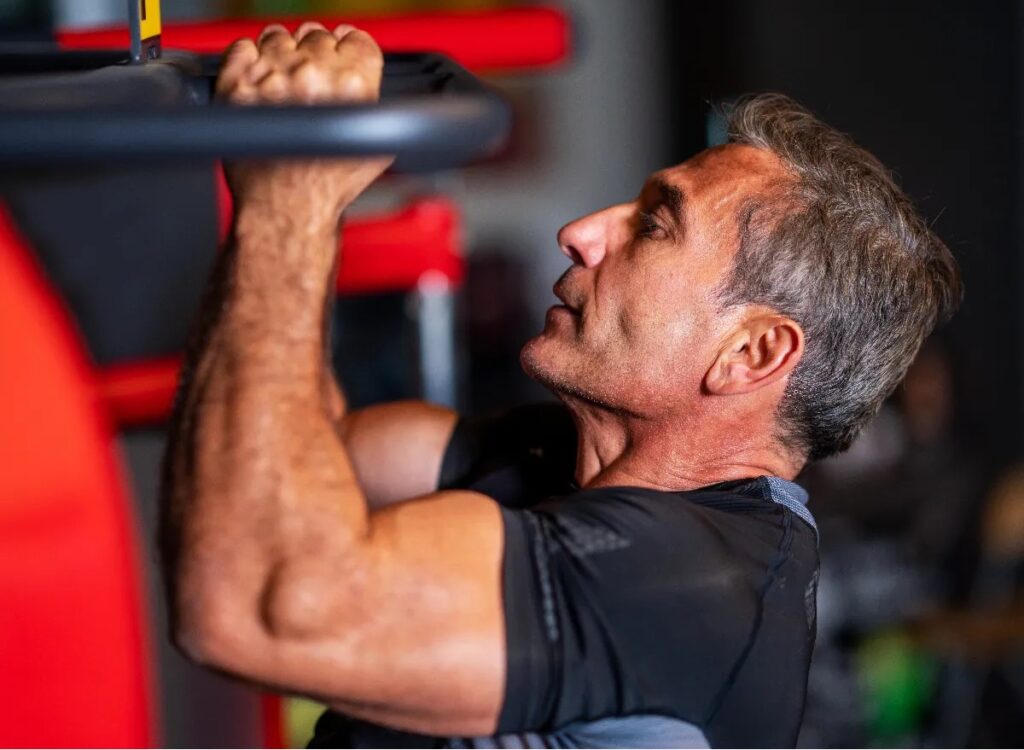In this post we discuss why more isn’t always better with resistance training and what else you can change to make progress.

Most of the people I work with start out in pain. It’s the primary reason they come to me regardless of their other goals.
In most cases they’ll be feeling better within 3 months.
Some will continue to work with me at this point, whilst others will have learned enough about their body and how to train it to become self managing.
Regardless of how they choose to move forward a similar issue will arise, the desire to do more.
Is more always better with resistance training?
This desire seems to be universal across all ages and all abilities. We always want more. More weight, more volume, more changes. We’re rarely satisfied with where we are.
This may be down to the transformative power of resistance training of course. There’s some logic to the thought that if you feel this good now, how much better could you feel if you do more?
After all one of the key tenets of resistance training is something called progressive overload.
This states that in order to make a muscle stronger we must progressively increase the resistance it’s working against.
Research suggests there’s a ceiling however. This is particularly true for strength gains.
Evidence for a ceiling effect in resistance training
This study had resistance trained individuals perform various exercises for either 1 set, 3 sets, or 5 sets to fatigue, 3 x per week for 8 weeks.
They found no difference in strength gains between the groups by the end of the 8 weeks, even though the higher volume group gained more muscle.
So a session that lasted just 13 minutes for the 1 set group, produced the same strength gains as one that lasted 68 minutes for the 5 set group.
This study even found that higher volume work may blunt strength gains. With groups that performed 5 and 10 sets per exercise per week, enjoying greater strength gains than those performing 15 sets or more.
How much strength do you actually need?
Once you’re out of pain you can presume there’s no longer a mismatch between what you’re asking your muscular system to tolerate and what it’s capable of producing.
In other words you’re strong enough for your current lifestyle.
This is a nice place to be.
By continuing to demand more and more from your muscular system, you’re moving the goal posts. To what end?
Increasing the weight or the volume too quickly is the surest way to increase your risk of injury and take you back to square one.
Alternative ways to progress in resistance training
Presuming you’re performing your exercises to the point of near fatigue, how else can you make progress in your training programme?
Change the joint angle
The smallest changes to the angle you’re either pulling or pushing a weight can make a dramatic difference to the weight you’re able to use.
Adaptations are specific to the joint angle being challenged. Alter that slightly to make progress.
Work joints in isolation
Let’s say you’ve plateaued in your progress in the squat. Break the exercise down into its constituent parts and train those muscles in isolation to promote further gains.
Slow down
Sometimes progress can be made by simply performing existing exercises in a more controlled fashion. Slow down the repetition speed and you’ll find you may even have to reduce the weight to establish control.
Focus
I’ll often ask people where they feel an exercise and their answers can be quite surprising. I get responses like ‘nowhere really’ or ‘at the back of the thigh’ when they’re working the muscles at the front.
Focus your attention on the muscles that should be doing the work. If you feel the exercise anywhere else stop and reevaluate.
Summary
Progress in resistance training need not always be measured in increased weight or volume.
Take particular notice of how you feel. Can you perform everyday tasks without pain or fear of movement?
Are you getting out of bed in the morning with fewer aches and pains?
If so you’re in a good place. Enjoy that.
Change other variables in the exercises you’re using before mindlessly adding more and more weight.